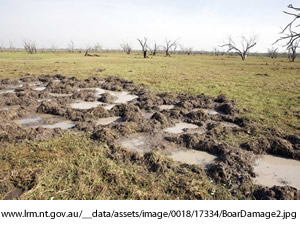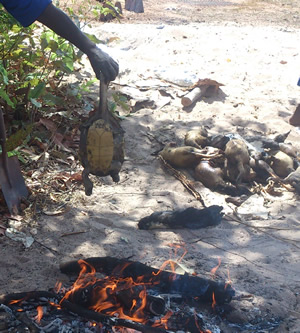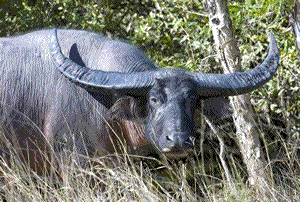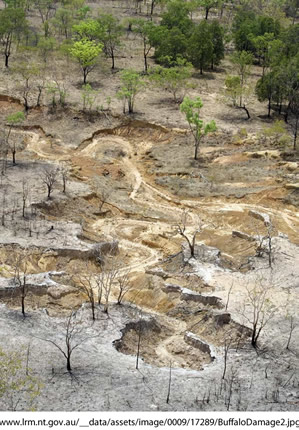Ecosystem-and the impact of some introduced pests.
Feral Pig Sus scrofa
Feral water buffalo Bubalus bubalis

At some stage during the 1770’s pigs were introduced to Australia as domesticated farm animals. Later, domestic pigs were taken to remote settlements all over Australia where some escaped and established a sizeable feral pig population.
Under the Commonwealth Environment Protection and Biodiversity Conservation Act 1999 (EPBC Act), feral pigs are listed as pests causing, destruction of native habitats, competing for food and habitats with native animals and transmitting disease.
Feral pigs dig up the soil in search of food. This destructive behaviour causes extensive damage to the environment making habitats unusable to native animals. This behaviour increases soil erosion and silt deposition in rivers.

Pigs also compete for food with the local fauna, since they are omnivores, that is, they can eat both plants and small animals, they out compete native animals for food. This reduces the availability of food for native species and can cause a reduction in the population of native animals by destroying nests of bird life such as, the magpie goose, a traditional food source for indigenous communities.
Feral pigs can also spread diseases like foot-and-mouth and tuberculosis, which can pose great dangers to domestic animal farming.

Like feral pigs, habitat destruction by feral buffaloes has also been observed to reduce the areas where magpie geese can nest.
Water buffalo were brought into Australia from South East Asia in the 19th century to provide meat for the remote northern settlements. As Northern settlements were abandoned buffaloes were released into the environment, where their populations increased in number.

On floodplains, buffaloes undertake movements in large herds leaving pathways that are stripped of vegetation and suffer soil erosion, as shown on the right. These pathways create new drainage channels which provide access for sea water to flow further inland.
During the `1980s an eradication program almost wiped out the water buffalo reducing their numbers to just a few thousand. As their numbers once again increased people are looking to more creative commercial solutions. Solution such as game hunting, meat for pet food and as a food source for remote communities.
